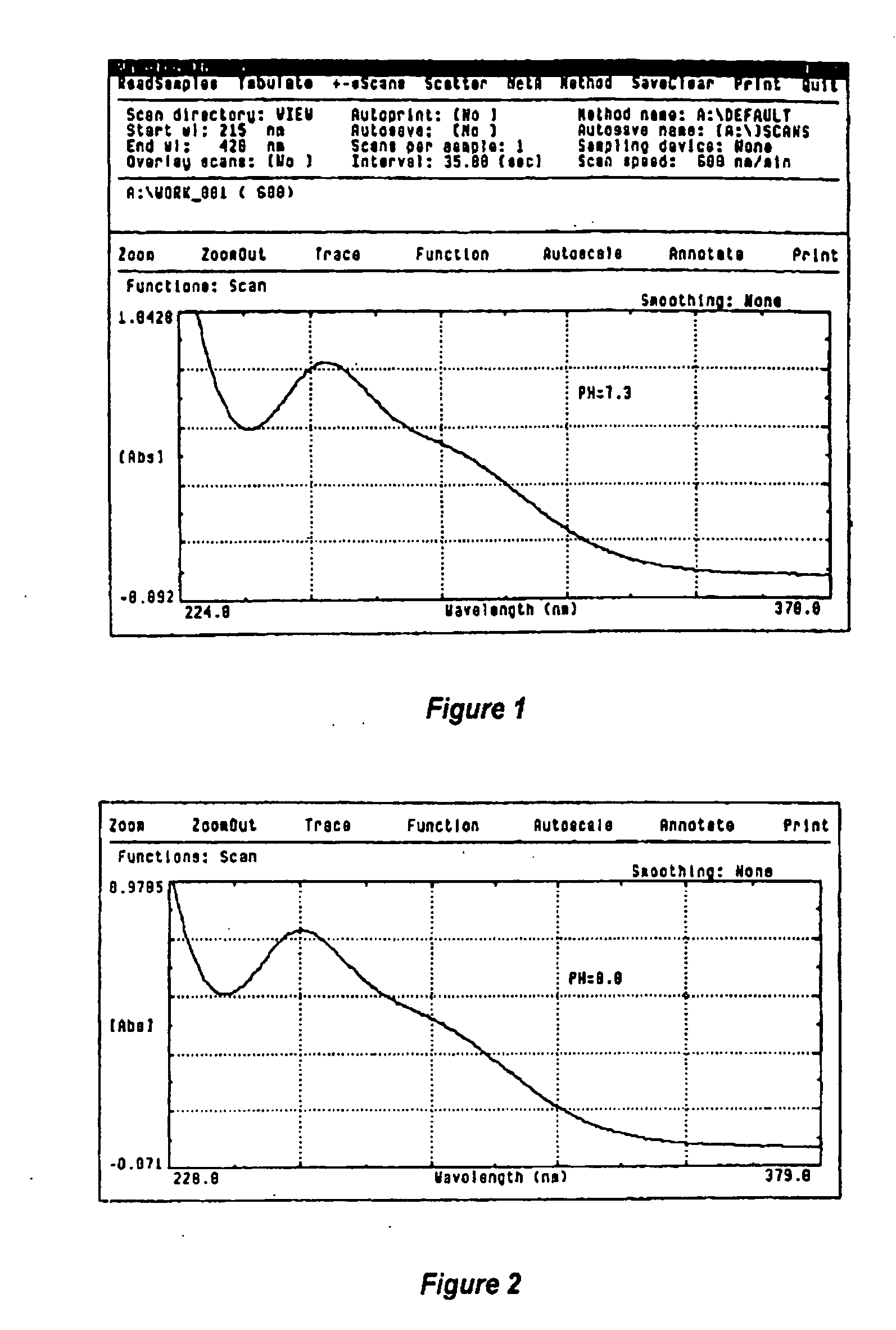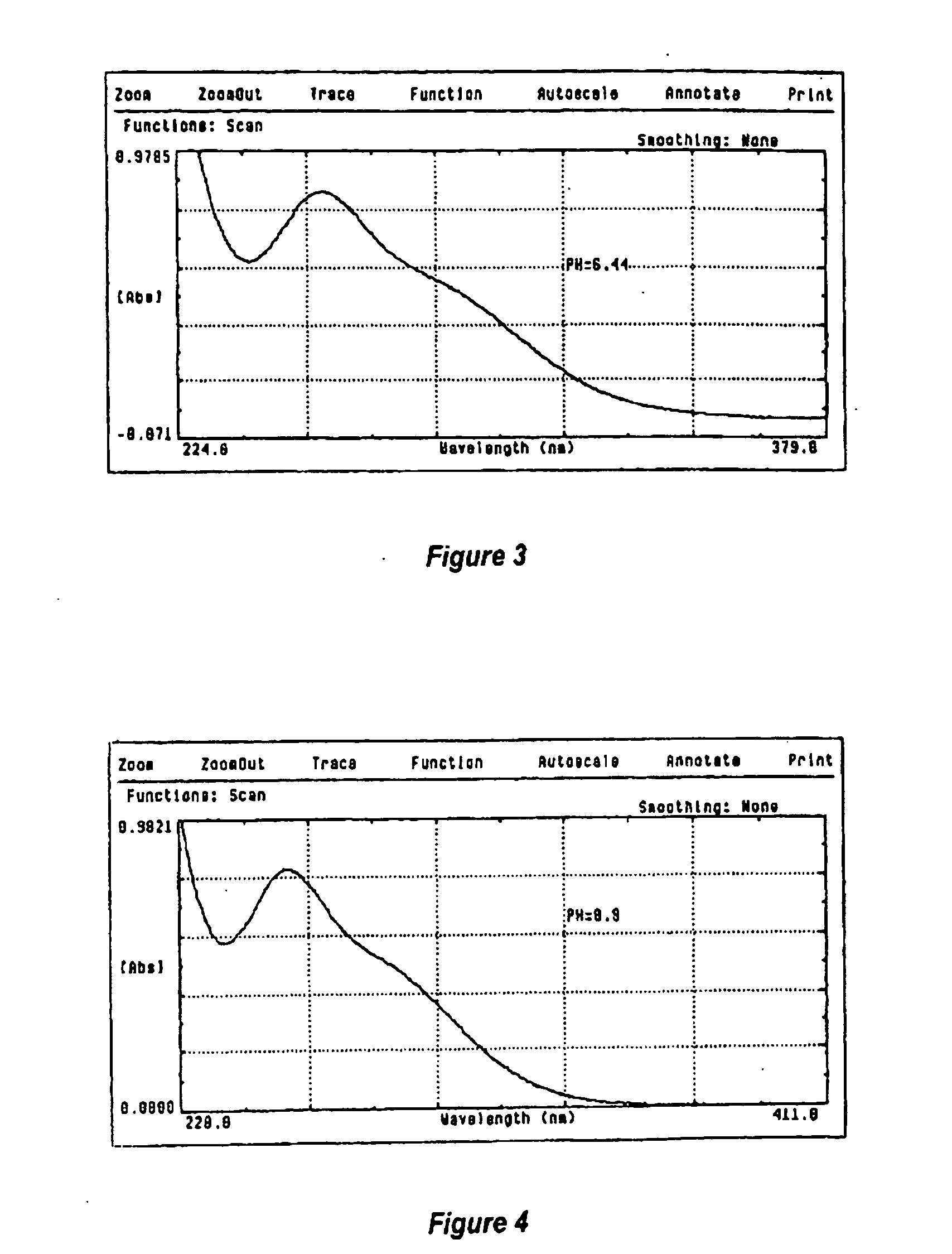Synergistic antimicrobial preparations containing chlorite and hydrogen peroxide
a technology of hydrogen peroxide and chlorite, which is applied in the field of disinfectant/antimicrobial preparations, can solve the problems of inability to dispense pure chlorine dioxide for topical use, high explosive and poisonous concentration of chlorine dioxide in liquid or gaseous state, and inability to routinely use chlorite as active microbicidal ingredient, etc., to achieve broad antimicrobial activity, prevent or minimize scarring, and treat or prevent dermal damage
- Summary
- Abstract
- Description
- Claims
- Application Information
AI Technical Summary
Benefits of technology
Problems solved by technology
Method used
Image
Examples
example 3
iii. EXAMPLE 3
Treatment of Cold Sores
[0170] A patient with painful, fluid-containing cold sores (i.e., chancre sores) on his lips was treated twice daily by application to the lips of a chlorite / peroxide preparation prepared in accordance with Formula 1 above.
[0171] Within 6 to 12 hours of the first application of the chlorite / peroxide preparation, the patient reported that the pain had subsided. Within 24 hours of the first application of the chlorite / peroxide preparation, the fluid contained within the cold sores had substantially dissipated and the cold sores appeared dry. Within six days of the first application of the chlorite / peroxide preparation the cold sores had substantially disappeared and the lips appeared normal, whereas cold sores of such severity typically require substantially longer than six days to completely disappear and heal.
example 4
iv. EXAMPLE 4
Treatment of Venous Ulcer
[0172] A patient with a venous ulcer on the right leg of 3-4 cm diameter which had been present for 9-12 months was treated by twice daily application to the ulcer of gauze soaked with a chlorite / peroxide liquid solution prepared in accordance with Formula 1 above.
[0173] Within three days after commencement of treatment the ulcer appeared clean and dry. Within 14 days of the commencement of treatment the ulcer began to decrease in size and healthy new tissue was observed about its periphery. At 35 days after commencement of treatment, the ulcer had completely healed, without scarring, and the area where the ulcer had been located was free of pain.
example 5
v. EXAMPLE 5
Treatment of Diabetic Decubitus Ulcer
[0174] A non-ambulatory, diabetic patient with decubitus ulcers on both legs and some toes, of 12-18 month duration, was treated by daily application of clean, sterile gauze to the ulcers and saturation of each gauze, three times each day, with a liquid chlorite / peroxide solution prepared in accordance with Formula 1 above. Within four to seven days of commencing the chlorite / hydrogen peroxide treatments the ulcers began to appear less inflamed, clean and dry. About seven to ten days after commencement of the chlorite / hydrogen peroxide treatment, granulation tissue began to form within the ulcers. Within 12 to 14 days, re-epithelialization was observed to have begun within the ulcerated areas except for one toe ulcer which had been particularly severe and had permeated to the bone of the toe. Within 30 to 45 days of the commencement of treatment, all of the ulcers except for the severe toe ulcer had completely closed and re-epithelia...
PUM
| Property | Measurement | Unit |
|---|---|---|
| pH | aaaaa | aaaaa |
| pH | aaaaa | aaaaa |
| pH | aaaaa | aaaaa |
Abstract
Description
Claims
Application Information
 Login to View More
Login to View More - R&D Engineer
- R&D Manager
- IP Professional
- Industry Leading Data Capabilities
- Powerful AI technology
- Patent DNA Extraction
Browse by: Latest US Patents, China's latest patents, Technical Efficacy Thesaurus, Application Domain, Technology Topic, Popular Technical Reports.
© 2024 PatSnap. All rights reserved.Legal|Privacy policy|Modern Slavery Act Transparency Statement|Sitemap|About US| Contact US: help@patsnap.com










